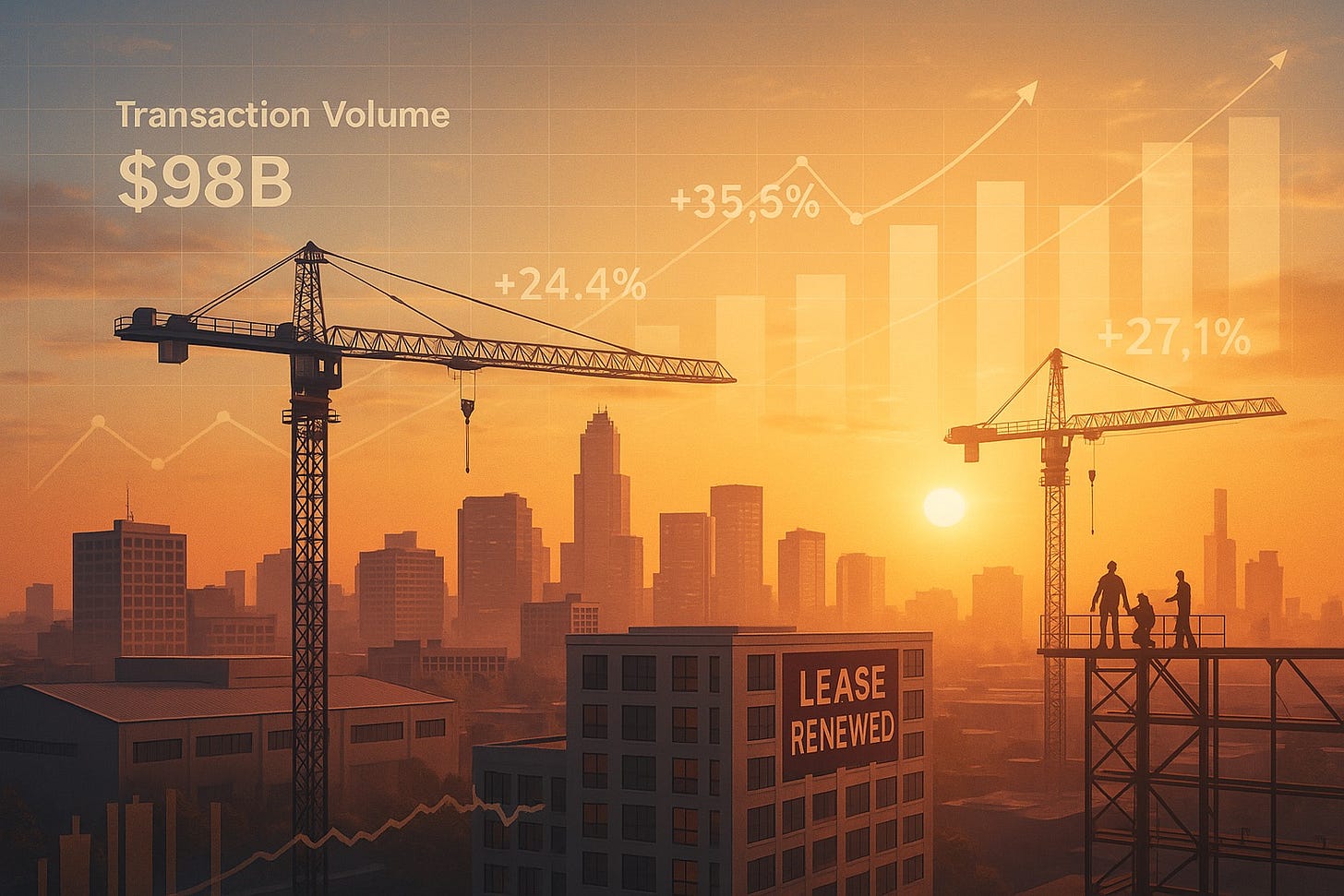Founder, Kaufman Development
There’s a quiet but undeniable rhythm forming in the commercial real estate market. After a brutal two-year stretch defined by rate hikes, price corrections, and capital gridlock, Q1 2025 marked a turning point—and not just in the data. The tone in the market is shifting. Deals are getting done. Lending is loosening. Optimism, cautious as it may be, is creeping back in.
Transaction Volume Is Up—Finally
According to the latest from Wells Fargo and GlobeSt, total CRE transactions hit $98 billion in Q1—an 11.3% year-over-year bump. That kind of movement doesn’t happen without underlying strength, and the surge was powered by two familiar players: multifamily and industrial.
Multifamily deals alone jumped 35.5%, with industrial close behind at 24.4%. These aren’t just numbers—they’re a signal that investor confidence is returning where the fundamentals still make sense. Hotels also logged a 27.1% transaction rise, but the office sector? That’s still a mess. Office deal volume fell nearly 18%, and distress levels remain high in most major CBDs.
Pricing Finds a Floor
For the first time since 2022, we saw a year-over-year uptick in CRE pricing—a modest 0.6%, but a welcome shift after months of declines. Multifamily leads the pricing index at 200.7 (baseline: 2006), and industrial follows at 189.3. Office prices? Still dragging near 77.7, with no clear bottom in sight.
Cap rates are stabilizing too. Multifamily clocked in at 5.7%, industrial at 6.4%, and office peaked at 7.7%—levels we haven’t seen since just after the GFC. These returns reflect risk, but also opportunity for those willing to wade into the storm.
Lease Renewals Surge as Renters Stay Put
Another under-the-radar trend is reshaping multifamily: record-high lease renewals. With mortgage rates still elevated and affordability out of reach for many would-be buyers, renters are staying longer than ever. Equity Residential posted a turnover rate of just 7.9%—nearly unheard of. At Camden and Essex, turnover dropped to 31% and 35%, respectively.
This renter stickiness is more than a trend—it’s an operational windfall for landlords. Lower turnover means fewer repairs, less vacancy loss, and more predictable cash flow. It’s one of the few bright spots where operational efficiency and macro pressure actually align.
Lending Is (Cautiously) Back
The lending environment is loosening—slightly. In Q1, just 1.6% of banks tightened standards on multifamily lending, while 12.7% eased them. Construction and nonresidential lending remain more cautious, but compared to 2023’s lockup, this is real movement. It’s not 2021 money, but it’s capital that wants to work.
Trump’s GSE Pivot Adds Volatility
Then there’s the wildcard: Trump is again floating the idea of taking Fannie Mae and Freddie Mac public. Markets responded immediately—Fannie jumped 33%, Freddie 27%—but the implications are murky. Spinning off the GSEs could unlock billions in Treasury returns, but it also threatens the liquidity backstop for over 60% of the mortgage market.
If the federal guarantee goes away without a rock-solid transition plan, expect mortgage rates to spike and risk premiums to rise across the board. This isn’t just a DC story—it’s a downstream issue for developers and debt providers alike.
The Outlook: Watch the Fundamentals
The big takeaway for Q1 is this: the CRE market is not booming, but it’s no longer bottoming out. Transaction velocity is returning. Prices are flattening. Capital is starting to flow again. And in key sectors like multifamily and industrial, we’re seeing real traction.
But challenges remain. The office sector continues to bleed, and even in multifamily, rent growth is modest (1.2% in Q1) and concessions are still common in lease-up markets. Supply is slowing, but not enough to erase competition, especially in the Sun Belt.
Still, for developers and investors who stayed patient, the market is finally offering windows of opportunity worth walking through.
Like what you’re reading?
Follow along for real-time analysis, market insights, and on-the-ground commentary at danielkaufmanre.com or subscribe for updates here on Substack.
